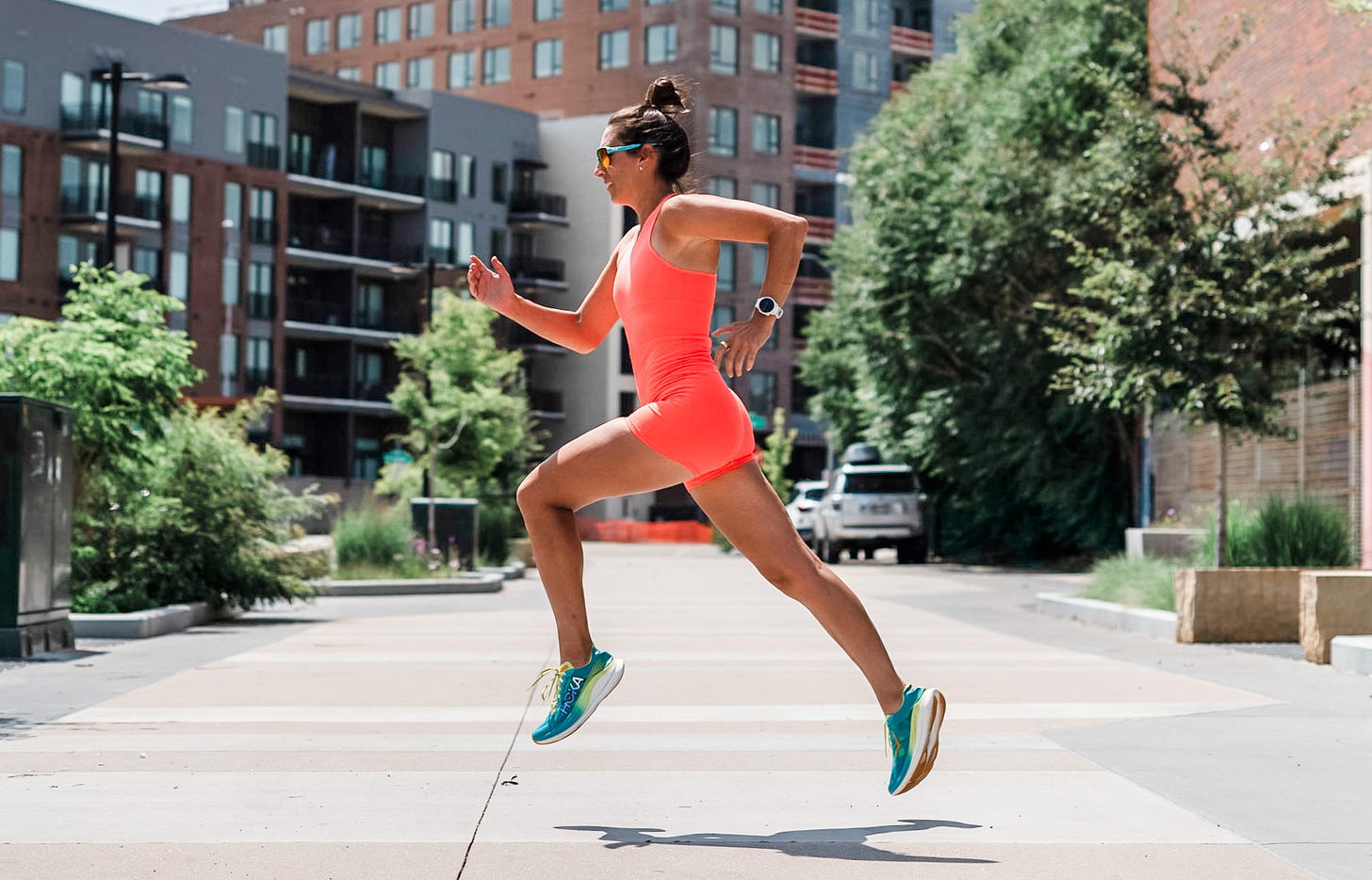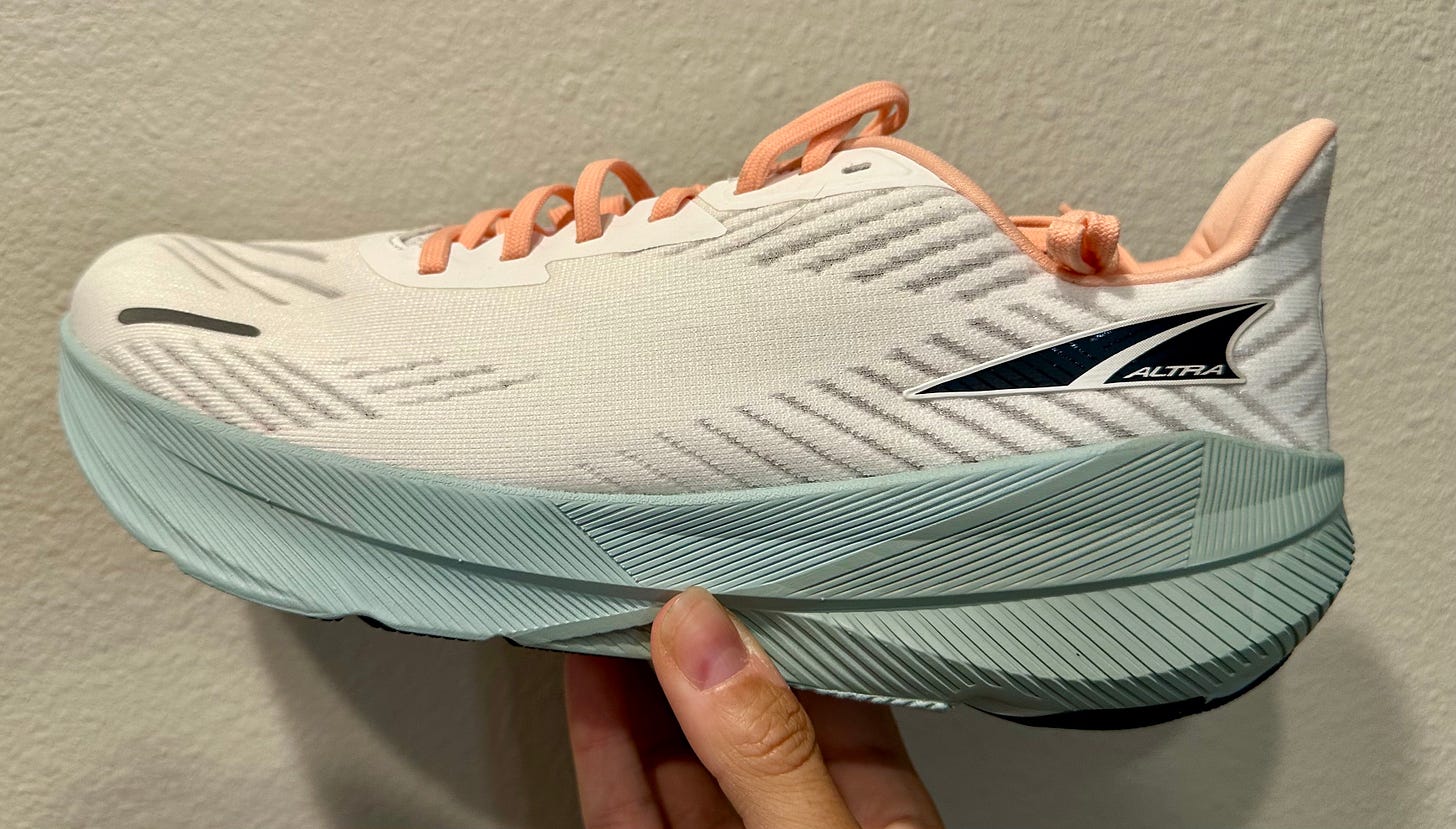How to Keep Your Love of Running From Becoming An Obsession
The elusive “runner’s high” can be as addictive as the term implies.
The mental health benefits are a huge part of why I love running. That said, the more I run, the more clear it becomes to me that running doesn’t exactly qualify as mental health treatment. I can’t help but side-eye some of the studies that have found exercise to be more beneficial for depression and anxiety than medications or standard psychotherapy, because I run more than the average person and I still take antidepressants and meet with a psychologist regularly.
Running isn’t some kind of wonder drug, and it’s not a replacement for therapy. I do think it can be an incredibly powerful tool against mental health issues, and that’s one of the reasons I’m running the New York City Marathon in support of the Release Recovery Foundation, a nonprofit dedicated to ensuring all who are ready and willing to seek professional treatment for substance use disorder and mental illness are able. destroy the lives of too many people from underserved communities who may not have the resources for proven treatments. The Release Foundation offers scholarships to bridge the gap between what people can afford and what they need to transform their lives, regardless of race, gender, and/or sexual orientation. (If you’re in New York, join their Community Runs on Monday nights during marathon season!)
But running can, in its own way, be as addictive as alcohol or cocaine. “I started running when I first went into treatment for addiction,” says Caryn Rude, a program specialist at Release Recovery who is currently in graduate school studying to become a mental health counselor. The more involved she got in the fitness community, the more hooked she became. “The adrenaline of doing something you didn’t know you could and having people cheer you on—I was like, oh, my god, this is a drug.”
When you run, your brain releases endorphins—feel-good chemicals that act like morphine, suppressing pain. At the same time, your body produces endocannabinoids, which are a naturally synthesized version of THC. So the term “runner’s high” is pretty on point. For Rude, who dealt with disordered eating alongside her other addictions, “running became my daily life and it kept me sane, but I also became obsessed and I started pushing myself to the extreme,” she explains.
Just like with any other drug, it is possible to abuse running. In the same way you start to need more or more drinks to feel a certain buzz, chasing that runner’s high can prompt people to run more often, faster, and further than may be healthy in pursuit of goal posts that just keep moving.
Grace Adams, the social media manager for Release Recovery, had never run before getting sober a year ago. In replacing drinking with running, “I not only spent so much more time doing better things for my body, there was this mental unblock, or a sense of clarity I’d get after running,” she explains. But chasing that sensation while training for this year’s New York City Marathon led to a familiar spiral: “I was running myself into the ground, trying to finish every run faster than my times the day before,” she says. “It was so unhealthy.”
“There is a thin and unclear line separating passionate athletes and running addicts,” researchers wrote in a 2023 study published in The Journal of Sports Medicine and Physical Fitness. They went on to call running “a high-risk sport for addiction development,” and said “all the benevolent attitudes and positive effects of running often mask the downsides of addiction that can compromise an individual and his or her physical, mental, and social functioning.”
Embracing running in a healthy way requires a significant amount of self-awareness.
Running can be a sneakier addiction than alcohol or drugs, mostly because it’s almost always lauded as a “healthy” activity. Which it absolutely is! “But when it’s in service of escaping something else, that’s when it becomes a problem,” says Laura Sorte, the Executive Director of Clinical Services. Using running to escape your stress—or to prevent troublesome thoughts or emotions—was found to be a form of “self-suppression” that can lead to exercise dependence in a 2023 study in Frontiers of Psychology.
Behaviors, whether binge drinking or overtraining, are often “unconscious strategies that help us avoid and disconnect with ourselves,” says Sorte. In healing—whether you’re overcoming addiction, dealing with a mental health disorder (the most common of which, by the way, are anxiety and depression), or just trying to manage stress—compensatory strategies emerge. You may start running with good intentions, but in a sport where the extremes are often lauded, it can be easy to slip out of balance—and “anything done to an extreme can be seen as a means of disconnecting,” she explains.
Embracing running in a healthy way, then, requires a significant amount of self-awareness. “To be human is to feel all the emotions and to feel them boldly, without judgment, self-hatred, and self-criticism,” says Sorte. And that’s really hard to do. It’s much easier to loudly claim you’re rejecting what doesn’t serve you and embrace something that superficially seems serve you. If alcohol was your method for disconnecting when experiencing hardships and distress, without self-awareness, running will simply replace alcohol in those types of moments.
Having done the hard work of checking herself into treatment and living in a sober house to confront one addiction, Adams was able to recognize when her running became problematic and step back and question the behaviors around it. “I stopped running for two full weeks because I needed a full reset,” she says. “I had to re-center myself and refocus on the fact that this is supposed to be fun before I could get back to it.”
Rude—who just ran the Berlin Marathon and will be running the NYC Marathon in November—says her relationship to healthy running is still a work in progress, as well. “To this day, I have to remind myself that if I don’t take care of myself while I’m trying to do all these accomplishments, I’m not going to be able to continue doing them,” she explains. Rude now works with a running coach and a therapist in order to maintain a healthy relationship with the sport. “You need advice and guidance, as well as people to keep you accountable and in check, because it can be easy to lose control,” she says. “My life can’t revolve around running and hurting myself—it’s not worth it.”
But, for most people, running in a healthy way really comes down to your why. “Are you doing it because you want your life to be healthier and more well-rounded?” says Sorte. “Or are you doing it because you’re fixated on a certain end goal, a caloric expenditure, a high that you can’t create any other way?” The answer can change at different points; the key is having the self-awareness to question your motives and adjust your behaviors when necessary.
For Adams, her two weeks off reaffirmed her why. “I think of all those mornings that I couldn’t get out of bed, where I had so much self-hatred and depression,” she says. “Now, I get to live this life where I’m proud of what I get to do on a daily basis. That just fires me up. I have so much compassion for that girl who was so sick, and that’s who I’m running for now.”
Thanks to FP Movement for supporting the rundown
I have to thank FP Movement for connecting me with Release Recovery and inviting me to run the NYC Marathon this fall. I’ve been wearing their running gear all summer and not only am I’m obsessed with all the fun colors, it all stands up to the rigors of marathon training. A few of my favorite pieces include the On The Radar Bra, Good Karma Running Shorts, Under Control Bra, and Prajna Short—everything is super soft and supportive, and I’ll be fully kitted out in FP Movement gear on race day. Stay tuned for details on a marathon shakeout meet-up!
the rundown
ALTRAFWD Experience
In case you missed all the social media jokes, zero-drop running shoe company Altra just went ahead and released their first shoe with a drop. The AltraFWD ($140, altra.com) has a minimal 4-millimeter drop, and was created to expand the brand’s reach. It’s a sleek-looking sneaker and still feels like an Altra, with the brand’s unique foot-shaped design, an EVA midsole, an engineered mesh upper, and rocker geometry. But for a shoe that totally pivots the company’s business model, I felt kind of…meh? It’s comfortable, for sure, but it’s not fast and it’s not particularly innovative. I do think it could be a good option for runners who are intrigued by the brand but not ready to fully embrace the zero-drop, but it’s probably not going to end up in my regular rotation.
Tiara Williams on Citius Mag Podcast
“Real Talk With Tee” was one of the highlights—for me, at least—of this year’s track season, and I’m so glad someone turned the mic on her for a change. This podcast was a very quick listen, but it was cool to hear from someone who’s blazing her own path in a very tumultuous sports media scene, and I think the comfort athletes’ show around her is a testament to how well it’s working—and, frankly, I think legacy media could learn a few things from her.
WHOOP Partners with OpenAI
Last week, Whoop announced WHOOP Coach, an advanced generative AI feature that provides “on-demand, personalized health and fitness coaching.” Basically, the company is using WHOOP’s algorithms, a custom-built machine learning model, performance science and research, and a member’s unique biometric data to identify patterns and connections in their data; then, using OpenAI, WHOOP Coach can produce answers to users’ questions. I’m mixed on this. I love wearable data, but I also think human nuance is crucial to making sense of it, and I hope this doesn’t discourage people from working with real doctors, coaches, and other experts to get to the root of issues.
The Data Behind the BQ Cutoff
This year’s Boston Marathon cut-off was a heartbreaker: Those who applied had to run 5:29 faster than their age group cutoff standards to get a spot. Of the 33,058 qualifier applications—highest number of qualified applicants in race history—22,019 applicants were accepted (the rest of the field will be made up of charity runners and sponsor bibs). Of the accepted, there are 12,535 men, 9,440 women, and 44 non-binary athletes. I know there’s a lot of frustration around the massive time gap, but here’s a feel-good stat: over one-third of the entire field (11,391 runners) will be running their first Boston Marathon.








FP Movement sounds like an awesome organization. Love what they're doing.